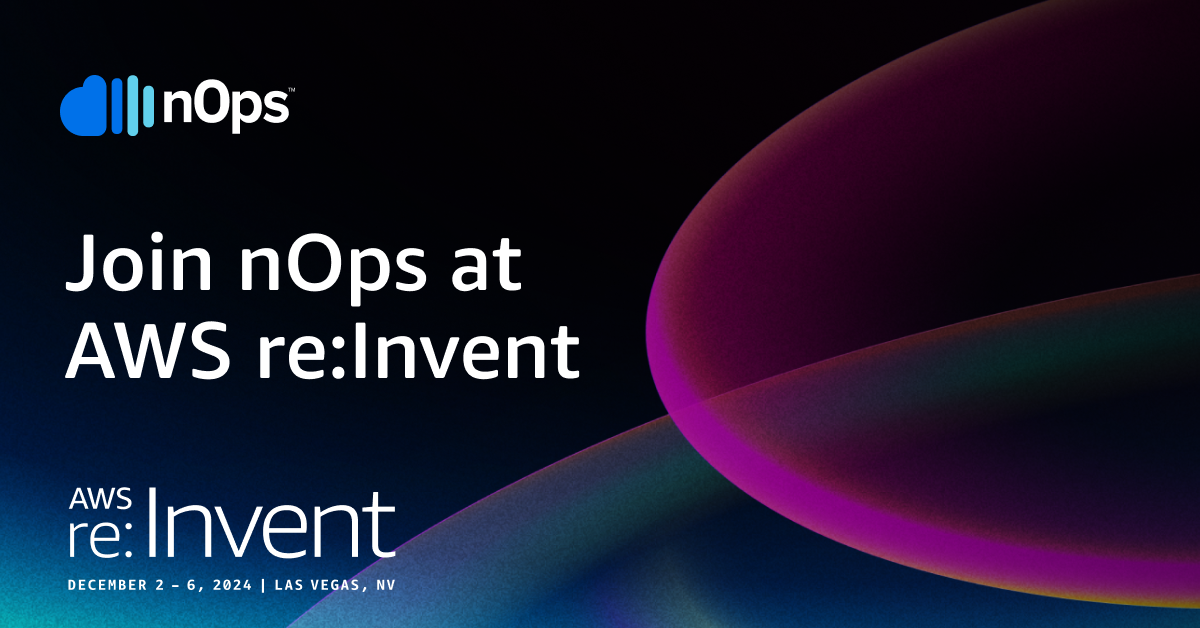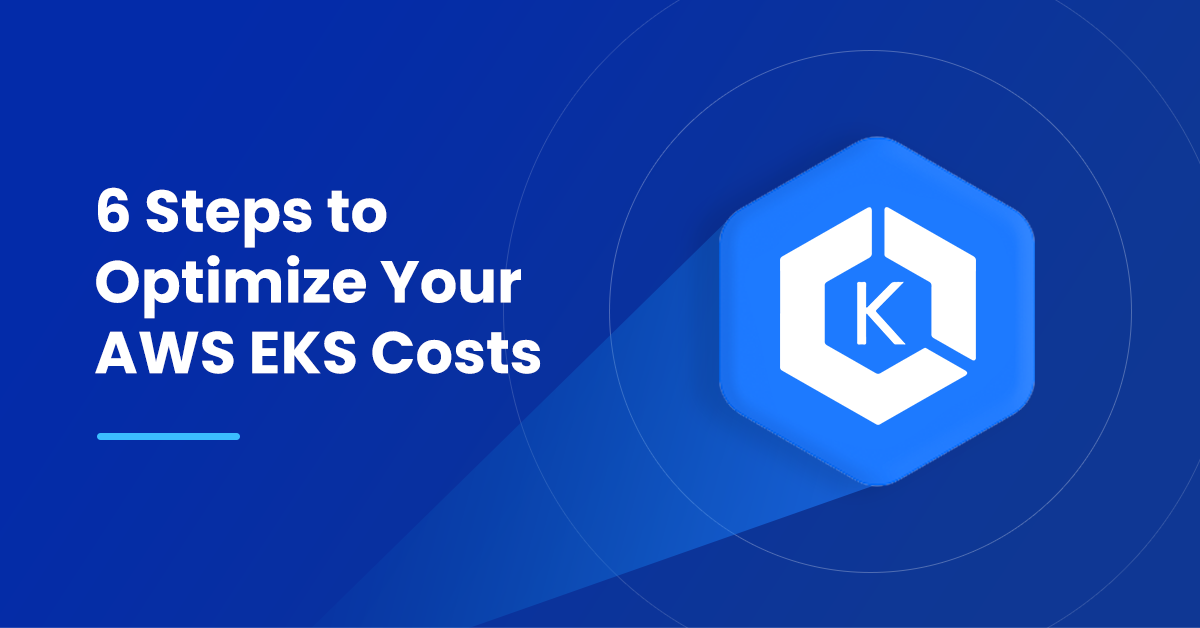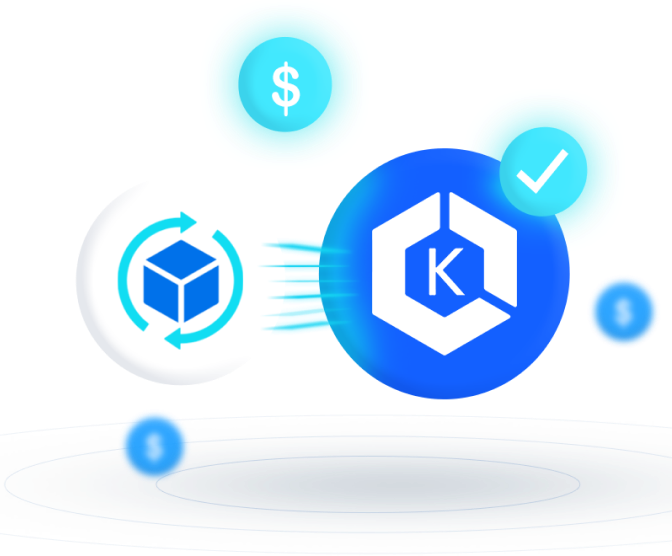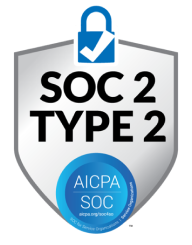Kubernetes is a powerful orchestration tool for managing containerized applications and is the most popular container-orchestration platform in use today. However, while AWS EKS provides a powerful and convenient way to manage containerized applications, it can also be costly.
Over half of IT budgets will be dedicated to the cloud by 2025, according to Gartner. EKS costs are a top line item in your AWS bill — that’s why we created this essential guide to reducing your EKS costs.
Steps To AWS EKS Cost Optimization!
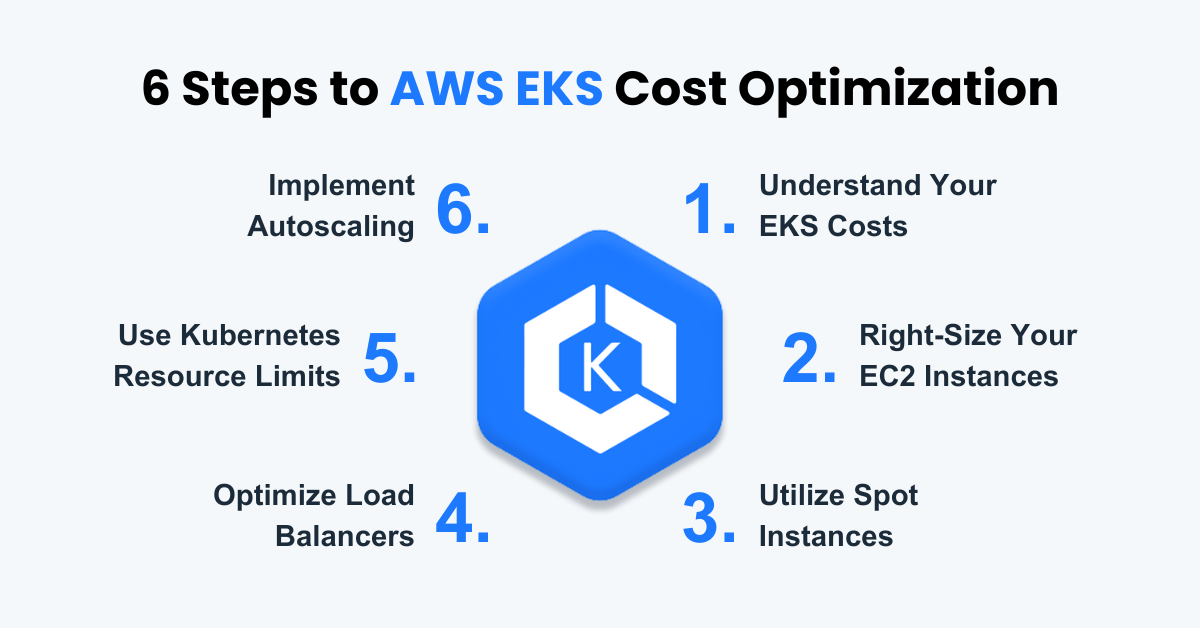
Step 1: Understand Your EKS Costs
To optimize EKS costs, the first step is to understand what you’re spending. EKS costs are comprised of EC2 instances, load balancers, storage, and other components. This involves identifying and analyzing the different cost components of your EKS infrastructure, such as compute resources, storage, networking, and other services.
However, manually tracking and managing EKS costs can be complex and time-consuming, especially when dealing with large-scale deployments and dynamic workloads.
If these challenges sound familiar, nOps can help.
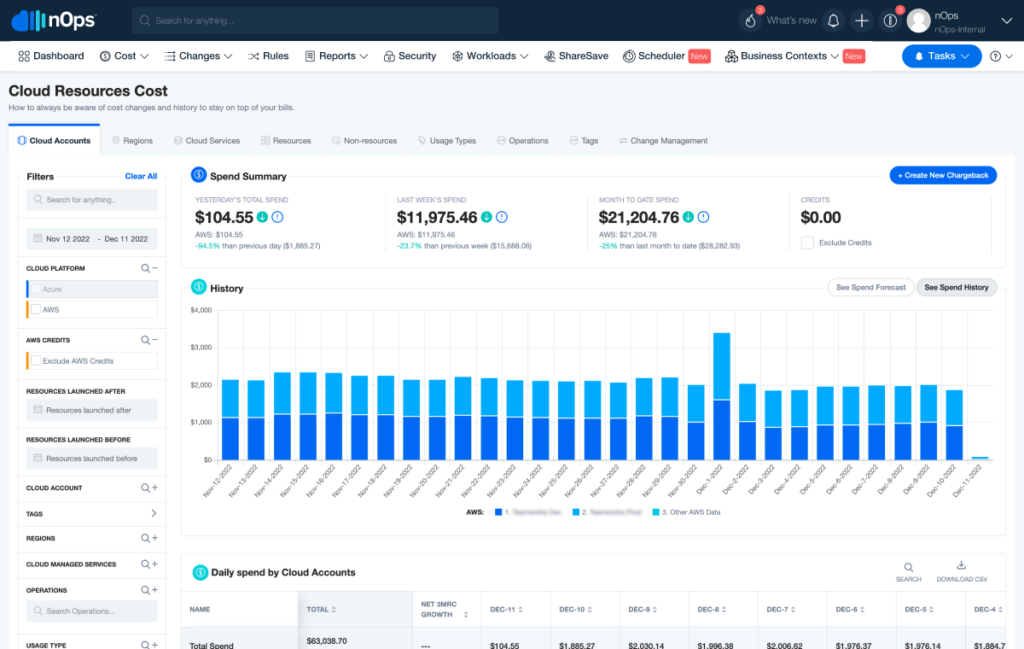
nOps is a cloud management platform that helps businesses optimize their cloud infrastructure costs by providing real-time insights into cloud usage and spending. With nOps, you can easily monitor and analyze your EKS costs, identify areas for optimization, and get actionable recommendations to reduce your spending.
Step 2: Right-Size Your EC2 Instances
Oversized EC2 instances can lead to unnecessary costs for organizations using cloud computing services. When an instance is over-provisioned with more resources than necessary, it results in higher operating costs that can strain the budget. In addition to the financial burden, overprovisioning can lead to poor application performance due to resource contention and wasted resources.
Optimizing EC2 instance sizes based on workload requirements is essential to prevent this problem. However, this task can be challenging, especially for large and complex environments with multiple applications and services running on different instances.
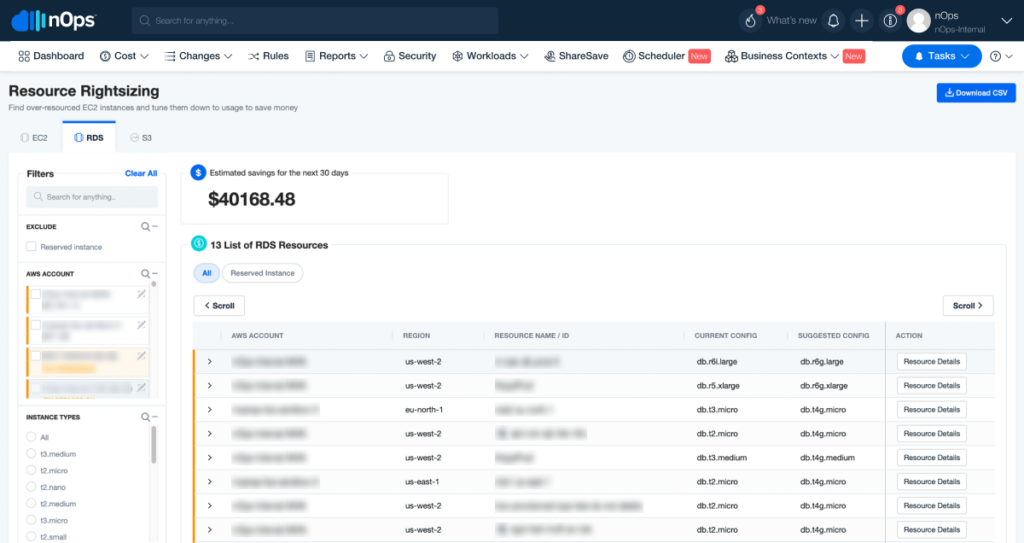
This is where nOps comes in. Using nOps Commitment Management, teams can identify overprovisioned instances and right size them to reduce costs without compromising performance. The platform provides actionable insights into resource utilization, so teams can make informed decisions on optimizing their cloud environment.
The Definitive Guide to AWS Rightsizing
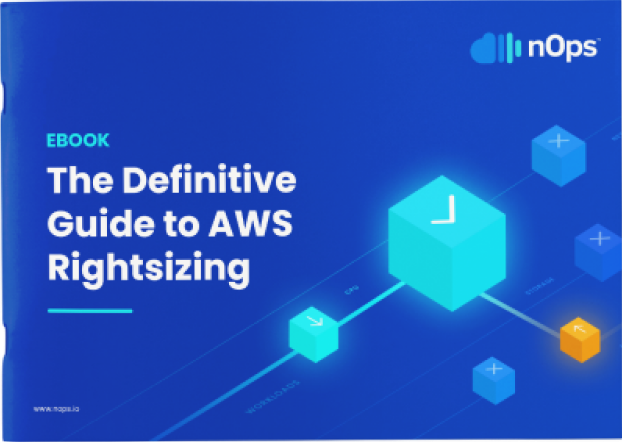
Step 3: Utilize Spot Instances
Spot instances are a cost-saving solution for businesses using Amazon Web Services (AWS) that require computing resources for their applications. These instances are spare capacities that AWS offers at a discounted price compared to On-Demand instances. By using Spot instances in Elastic Kubernetes Service (EKS) clusters, businesses can achieve significant savings of up to 90% on EC2 costs.
However, managing Spot instances in EKS clusters can be complex and challenging, as these instances can be interrupted at any time if AWS needs to reclaim the spare capacity. This can lead to disruptions in application performance and availability.
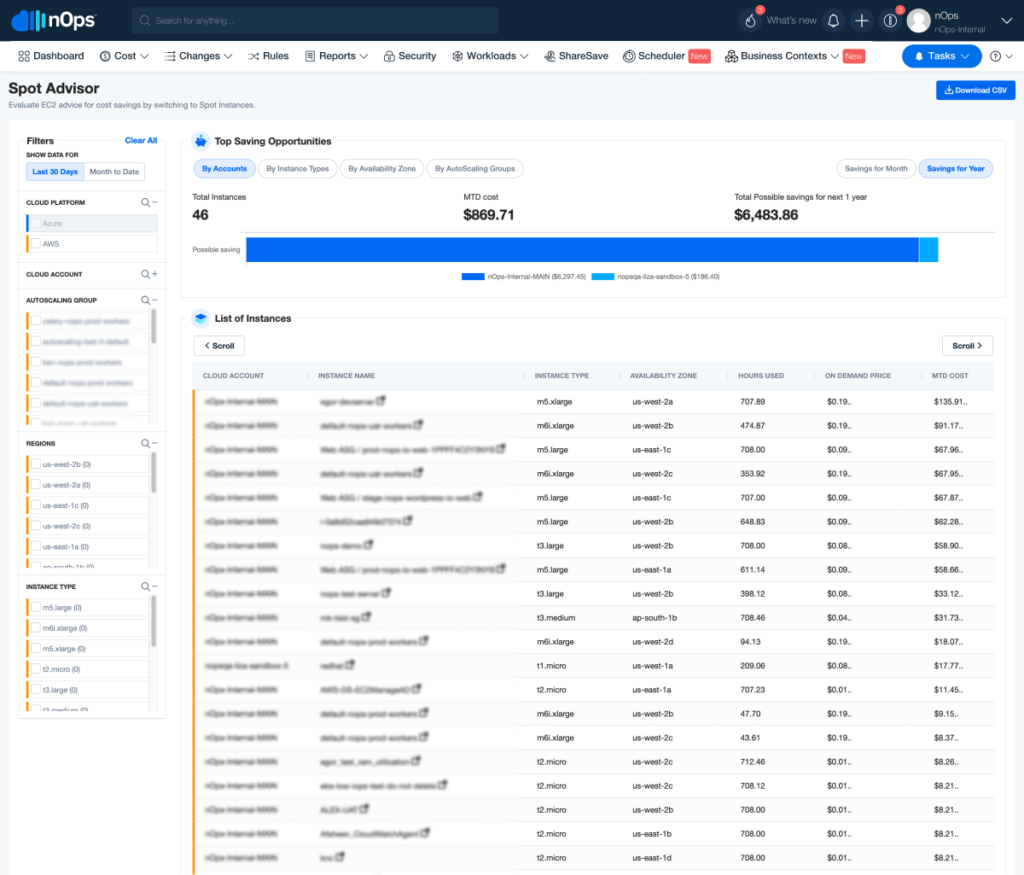
Step 4: Optimize Load Balancers
Load balancers are essential to the Amazon Elastic Kubernetes Service (EKS) infrastructure, enabling efficient distribution of incoming network traffic across multiple backend resources. However, load balancers can also be a significant cost driver, especially when not optimized to handle usage patterns.
Optimizing your load balancers to adjust capacity and routing rules based on usage patterns can lead to significant cost savings while maintaining application availability. This optimization can be a complex and time-consuming task that requires careful analysis and monitoring of various metrics such as traffic patterns, response times, and server capacity.
Fortunately, nOps helps you integrate with Amazon Web Services (AWS) and analyze infrastructure data in real-time; nops can help you identify areas where you can optimize your load balancers to reduce costs and improve application availability.
Step 5: Use Kubernetes Resource Limits
Kubernetes resource limits are essential in optimizing EKS costs, as they prevent containers from using more resources than necessary. By setting resource limits for Kubernetes pods and containers, businesses can effectively manage resource usage and reduce the overall number of EC2 instances required to run their applications, leading to significant cost savings.
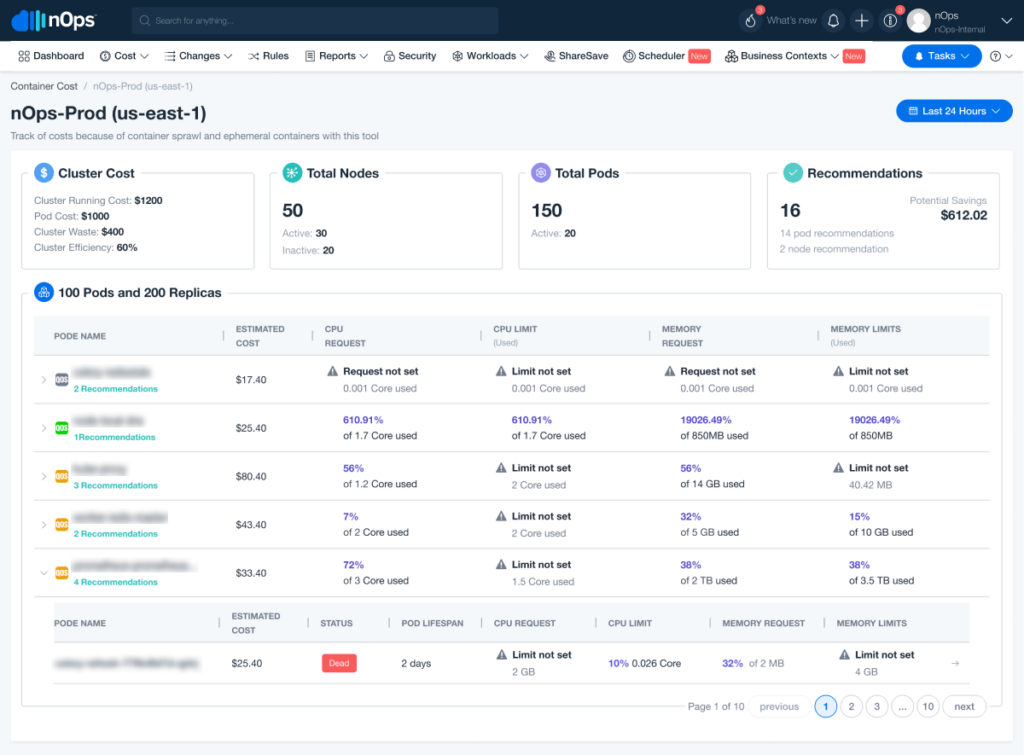
nOps pod recommendations give you the exact parameters to tune your pod resource requests and limits confidently. Keeping your pods tuned eliminates waste in your cluster by freeing up space for pods to scale on existing cluster nodes — and helps your team with the immediate benefits of very low overhead.
Step 6: Implement Autoscaling:
Cluster autoscaling can help optimize EKS costs by automatically adding or removing EC2 instances based on demand. When you use autoscaling, you can optimize your EKS costs by ensuring that you only pay for the resources you need when you need them.
Autoscaling works by monitoring the resource utilization of your application, such as CPU and memory usage. When the utilization reaches a predefined threshold, the autoscaling system will automatically add more EC2 instances to your EKS cluster to meet the demand. This ensures that your application can handle the increased traffic and workload without any degradation in performance.
On the other hand, when the demand for your application decreases, the autoscaling system will automatically remove the EC2 instances to reduce the resources being used.
How Can nOps Help With EKS Cost Optimization?
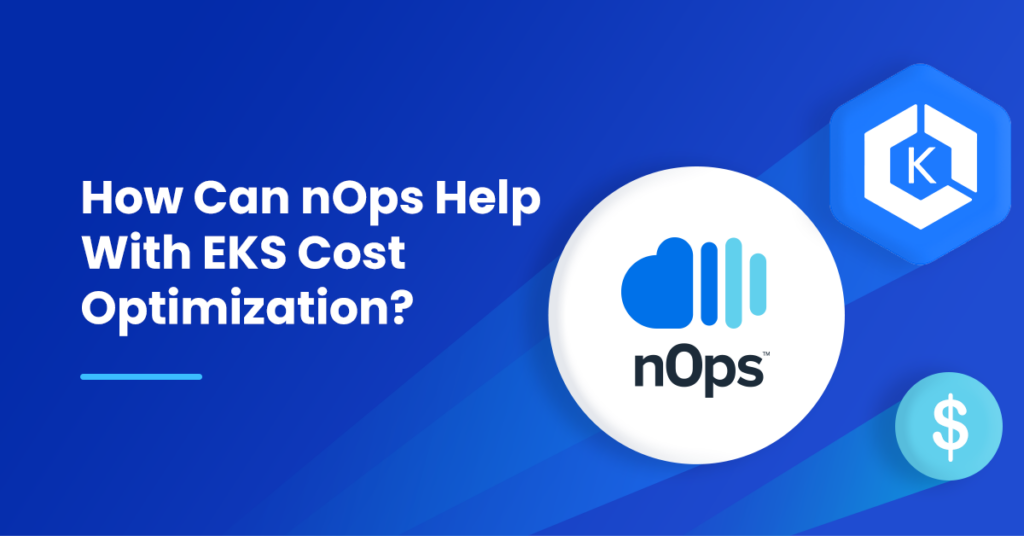
nOps Compute Copilot constantly manages the scheduling and scaling of your EKS workloads for the best price and stability. Here are a few of the benefits:
Optimize your RI, SP and Spot automatically for 50%+ savings — Copilot analyzes your organizational usage and market pricing to ensure you’re always on the best options.
Reliably run business-critical workloads on Spot. Our ML model predicts Spot terminations 60 minutes in advance.
All-in-one solution — get all the essential cloud cost optimization features (cost allocation, reporting, scheduling, rightsizing, & more)
Copilot is entrusted with over one billion dollars of cloud spend. Join our satisfied customers who recently named us #1 in G2’s cloud cost management category by booking a demo today.
